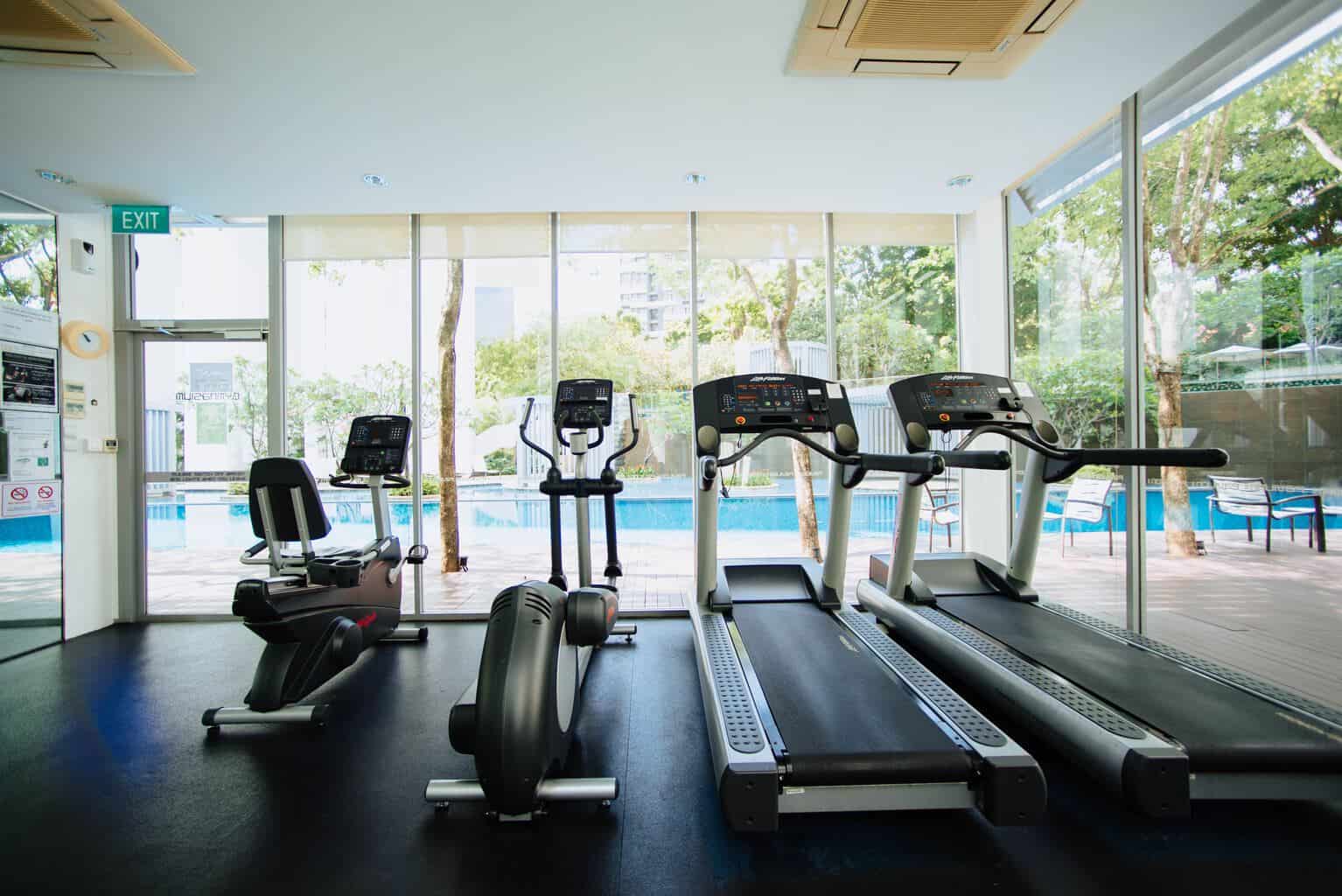- PhentermineLearn more about phentermine and how to get the most from your weight loss journey.
- ResourcesAdditional information and tools to help you make the most of your effort.
- AlternativesLearn more about the most popular weight loss medications and science-backed supplements
How Does Cardio Exercise Help With Weight Loss?
Published on December 11, 2024

Facts are facts: a growing number of individuals struggle with being too heavy or tipping the scales toward obesity. What’s truly frightening is the bunch of health hassles and snags this extra weight drags along. Moreover, there’s a real challenge in how people tackle shedding those extra pounds.
So many drugs and therapies have been tried, some are still in use, however, there have been poor responses to these drugs and therapies. This has led scientists, researchers and investigators to seek out better alternatives as a solution to the problem of overweight and obesity leading to discoveries and invention of novel drugs and therapies, one of which is cardio exercises (aka cardio workouts, aerobic exercise)
What Are Cardio Exercises?
Cardio exercises are bodily exercises that are dynamic and of low to a high amount that is subject chiefly to the aerobic energy-generating process. The word “Aerobic” means “involving, requiring or relating to unrestricted oxygen,” and can be defined as the usage of oxygen to sufficiently meet energy requirements during exercises through aerobic metabolic activity.
Normally, light-to-moderate intensity actions that are adequately sustained with aerobic metabolism can be executed for prolonged periods. A more ideal name for what is usually termed aerobic exercise might be “solely aerobic,” because it is considered to be low-intensity enough so that all sugars are aerobically broken down and converted into energy source leading to weight loss (1).
Historically, British physiologist, Archibald Hillin 1922, presented the notions of maximal oxygen usage. Otto Meyerhof (a German physician) and Hill were awarded a joint Nobel prize in Physiology or Medicine for their work that was related to metabolic activity associated with muscle energy. At the end of World War II, individualistic, non-organized, health-oriented physical and recreational activities, such as jogging, long-walking, etc.were being popularized as forms of exercises (1, 2).
Dr. Bill Orban in 1961, developed and published the Royal Canadian Air Force Exercise Plans, which helped to inaugurate the modern fitness philosophy. In the 1970s, the Olympics inspired a running roar. Col. Pauline Potts (a physiotherapist) and Dr. Kenneth Cooper, both members of the U.S Air Force, promoted the idea of cardio exercise. Cooper in the 1960s started an investigation into preemptive medicine (3).
The first extensive research on cardio exercise was conducted by him on over 5,000 the United States Air Force personnel after becoming fascinated by the acceptance that exercise can preserve one’s health and fitness. In the 1970s, cardio was developed as an exercise form and became well known globally in the 1980s following the fame of Jane Fonda’s exercise videos in 1982 (1).
Characteristics of Cardio Exercise for Weight Loss
Cardio exercise is executed at a modest level of intensity over a sensibly extended time in order to induce weight loss (1). For instance, running a lengthy expanse at a moderate speed is a form of cardio exercise, going a dashing speed is not.
Playing singles tennis, while sustaining a motion as continuously as possible, is generally considered cardio exercise, while two-person team tennis or golf, with brief bursts of activity interrupted by more recurrent breaks, may not be largely aerobic.
Some sports are thus inherently “aerobic,” while other cardio exercises, such as fartlek training or cardio dance classes, are planned specifically to develop aerobic fitness and capability
It is most common for cardio exercises to involve the leg muscles, primarily or solely. There are some exceptions though. For example, paddling to distances of at least 2,000 meters is a cardio workout that exercises several key muscle groups, including those of the legs, chest, abdominals, and arms.
Effects of Cardio Exercises on Body Weight
- Cardio exercises facilitate the breakdown of muscle fats during exercises, conserving intramuscular glycogen thereby causing lipolysis and weight loss
- It increases blood flow through the muscles thereby improving fat metabolism during exercises through neovascularization of the muscle sarcomeres
- It increases the rate at which aerobic metabolism occurs within muscles, allowing a greater portion of energy for intense exercise to be generated aerobically leading to break down of energy sources and weight loss
Other Health Benefits of Cardio Exercises (1, 4)
- It strengthens the cardiac muscle, to increase its pumping efficiency and decrease the resting heart rate, known as aerobic conditioning
- It causes an increase in the total red blood cells production in the body, enabling oxygen transport
- It strengthens the diaphragm and other respiratory muscles, to improve airflow in and out of the lungs
- It improves mental health, with stress reduction and lowering the rate of depression, and increases cognitive capacity.
- The risk of diabetes mellitus is reduced.
- There is improved circulatory efficiency and prevention of hypertension
- The risk of death from cardiovascular problems is significantly reduced
- There is stimulation of bone growth
- There are reduced tendencies of osteoporosis in both men and women
- It enhances the rate of recovery of skeletal muscles from high-intensity exercise
- There is improved brain neural connections
- It increases in gray matter density and neuronal growth
- Cognition is improved (cognitive functions and various memory forms)
- There are an overall improvement and preservation of mental health
Types of Cardio Exercises
Indoors
- An elliptical trainer or cross-trainer: This is a stationary exercise device used to mimic walking, stair climbing, or running devoid of causing undue pressure to the joints, hence reducing the risk of contact injuries. This is why people with some injuries can still use an elliptical to keep fit, as the low impact has little or no negative effect on them (5).
Elliptical trainers offer a non-impact cardio workout that can vary from low to high intensity depending on the speed of the exercise and the preferred resistance set by the operator. Three types exist; the front-drive, rear-drive and center-drive. Depending on your weight and intensity, 30 minutes on the elliptical will burn an average of between 170 – 320 calories (6). - Indoor rower: This is a machine used to mimic the action of watercraft rowing for the aim of training or exercise for rowing. Indoor rowing has become a recognized sport in its own right. The term also denotes a contestant in this sport. Modern indoor rowers are often known as ergometers, an ergometer being a device which estimates the amount of work performed (7).
The indoor rower is adjusted to measure the quantity of energy the rower is using over their use of the device. Rowing breakdown an average of about 210 calories at a moderate pace for 30 minutes for 120 to130-pounds individuals and 309 to 312 calories for a 185-pound individual. For forceful rowing, those numbers are 250 to 260 and 375 to 380 calories, respectively (8). - Stationary bicycle: This is a bicycle-like device used as exercise equipment customized to include a saddle, pedals, and some form of handlebars arranged as on an immobile bicycle. This device is typically a special-purpose exercise machine looking like a bicycle without wheels (9).
It is also thinkable to adapt an ordinary bicycle for stationary exercise by fixing it on bicycle rollers or a trainer. Rollers and trainers are often used by racing cyclists to train before racing events, or as their own indoor machines.
Often, with a stationary bicycle, an individual will burn between 450 to 750 calories per hour cycling. The number of calories burnt, however, depends on the person’s weight, speed and biking duration (6). - Treadmill: This is a device basically for indoor walking or running or climbing while staying in the same place. Treadmills were announced before the development of motorized machines, to put to use the power of animals or humans to do work, frequently a type of mill that was controlled by a person or animal walking on treadwheel to grind grain.
Subsequently, treadmills were used in prisons as punishment devices for people condemned to hard labor. The terms ‘treadmill’ and ‘treadwheel’ were used interchangeably for the power and punishment mechanisms.
More recently, treadmills are used as exercise tools for walking or running in one place. The machine offers a moving platform with a wide conveyor belt driven by an electric motor or a flywheel. The belt moves from the front to the rear, needing the user to walk or run at a speed matching that of the belt. The rate at which the belt moves is the rate of walking or running. Thus, the speed of running may be controlled and adjusted.
The more luxurious, durable forms are motor-driven. The simpler, lighter, and cheaper versions passively resist the motion, moving only when walkers push the belt with their feet.
The latter are called manual treadmills. Walking fast on the treadmill for 30 minutes, at a speed of 4 to 5 mph, a 125-pound person will burn around 150 calories. Running on the treadmill for 30 minutes at an easy pace of 5 mph, a 125-pound person will burn 240 calories while a 185-pound person will burn about 355 calories. In all of these, consistency is key to achieving the desired result (9).
Outdoors
- Walking: Weight, speed and walking distance has the biggest impact on the number of calories burned from walking. About 110 calories per mile are burnt for a 200-pound person and 70 calories per mile are burnt for a 130-pound person (6).
- Cycling: The use of bicycles has been termed a means of transportation, recreation, exercise or sport. Present, it is a known form of cardio exercise that can be used by overweight and obese individuals as therapy for weight loss.
People engaged in cycling are referred to as “cyclists”, “bikers”, or less commonly, as “bicyclists”. Apart from two-wheeled bicycles, “cycling” also includes the riding of unicycles, tricycles, quadricycles, recumbent and similar human-powered vehicles.
Bicycles were invented in the 19th century and now quantity approximately one billion globally. They are the principal means of transportation in many parts worldwide. Cycling is widely regarded as a very effective and efficient mode of not just transportation but also for cardio exercise (10).
Often, an individual will lose between 450 to 750 calories per hour cycling.
The number of calories depends on individual’s weight, speed and duration of biking (6). - Running: This is a method of ground-based motion allowing humans to move rapidly on foot. Running is a type of gait characterized by an aerial phase in which all feet are above the ground (with few exceptions though). This is in contrast to walking, where one foot is constantly in contact with the ground, the legs are kept generally straight and the center of gravity extends over the stance leg or legs in an upturned pendulum fashion (11).
A feature of a running body from the vantage of spring-mass mechanics is that changes in kinetic and potential energy within a stride occur concurrently, with energy storage accomplished by springy tendons and passive muscle elasticity. The term running can refer to any of a variety of speeds ranging from jogging to sprinting.
155 calories per mile are burnt for a 200-pound person running at 10 min per mile pace and 100 calories per mile are burned for a 130-pound person at the same jogging pace.
The individual’s weight, speed, and running distance have the biggest influence on how much calories the individual burns while running (6). - Skateboarding: Skateboarding which has been shaped and influenced by many skateboarders throughout the years. This is a sport which involves riding and performing tricks using a skateboard, as well as a recreational activity, an art form, an entertainment industry job, a method of transportation and a form of cardio exercise for weight loss.
60 minutes of skateboarding burns about 300 calories in a 125-pound person and 444 calories in a 185-pound person. When the same individuals skate every day in one week, each will burn 2,100 and 3,108 calories, respectively (12). - Cross-country skiing: This is a form of skiing where skiers depend on their own motion to move across the snow-covered ground, rather than using ski lifts or other systems of support. Cross-country skiing is widely practiced as a sport and leisure activities, and adapted as a form of cardio exercise; however, some still use it as a means of transportation (1).
Variants of cross-country skiing are modified to various terrain which spans unaltered, sometimes hilly terrain to groomed options that are precisely intended for the sport.
An individual who weighs 155 pounds will burn about 223 calories in half an hour of downhill skiing. Someone who is 185 pounds will burn up to 266 calories in 30 minutes of downhill skiing. Much more calories are expected to be burnt when going uphill (14)
Indoors/Outdoors
- Swimming: This is the self-propulsive movement of a person through the water. Previously used as recreation, sport, exercise, or survival but now included as a form of cardio exercise proved to be useful for weight loss.
Locomotion is attained through the synchronized movement of the limbs, the body, or both. Humans can hold their breath underwater and undertake simple locomotive swimming within weeks of birth, as a survival response (1).
Swimming is consistently among the top public recreational activities, and in some countries, swimming lessons are a compulsory part of the educational curriculum. Its benefit has notably be seen to be beneficial to overweight and obese individual.
An individual’s weight, stroke, duration of swimming, and speed have the biggest influence on how many calories will be burnt in swimming.
About 950 calories per hour are burnt for a 200-pound person swimming front crawl at 20-second length pace and about 360 calories per hour are burned for a 130-pound person swimming front crawl at 60-second length pace (6). - Jogging: This is a form of running or trotting at a slow or leisurely pace. The main aim is to increase physical fitness with little or no stress on the body. Then from faster running but further than walking, or to keep a stable speed for longer periods of time. It is better performed over long distances and a known form of cardio exercise.
At a six-mile per hour pace, and one will burn above 557 calories per hour. And even if this seems a bit of a stretch, one can still burn an impressive 398 calories per hour by jogging (13). - Skipping: Skipping rope are used in the sport of skipping/jump rope where one or more participants jump over a rope swung so that it passes under their feet and over their heads. There are numerous subsets of skipping/jump rope including single freestyle, single speed, pairs, three-person freestyle, and three-person speed. Calories burned jumping rope can work out to 15 to 20 calories per minute.
Often, an individual could burn 200 to 300 calories in a simple 15-minute jump rope workout. Not simply for kids or boxers, skipping can burn 25% more calories per minute than running (6).
Conclusion
Cardio exercises are known to be useful in stimulating weight loss amongst other health benefits and their importance in this respect cannot be overemphasized.
It is one of the few natural means of achieving weight loss for overweight and obese.
References
(1) https://en.wikipedia.org/wiki/Aerobic_exercise
(2) https://www.palgrave.com/gb/book/9780230507494
(3) https://www.latimes.com/archives/la-xpm-2009-mar-30-he-aerobics30-story.html
(4) https://care.diabetesjournals.org/content/29/11/2518
(5) https://en.wikipedia.org/w/index.php?title=Elliptical_trainer&oldid=901951425
(6) https://caloriesburnedhq.com/calories-burned-on-elliptical/
(7) https://en.wikipedia.org/w/index.php?title=Indoor_rower&oldid=900351430
(8) https://livehealthy.chron.com/ways-burn-calories-rowing-machine-5567.html
(9) https://livehealthy.chron.com/can-doing-30-minutes-treadmill-lose-weight-4798.html
(10) https://en.wikipedia.org/w/index.php?title=Cycling&oldid=903687146
(11) https://en.wikipedia.org/w/index.php?title=Running&oldid=902940289
(12) https://livehealthy.chron.com/skateboarding-good-losing-weight-8457.html
(13) https://www.yahoo.com/lifestyle/11-workouts-that-burn-more-calories-than-jogging-95103539057.html
(14) https://www.livestrong.com/article/307930-how-many-calories-are-burned-in-downhill-skiing/


